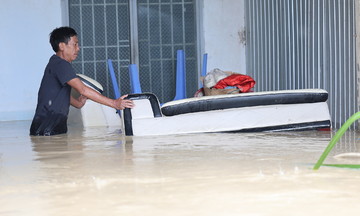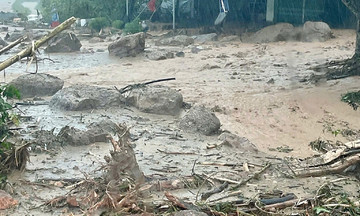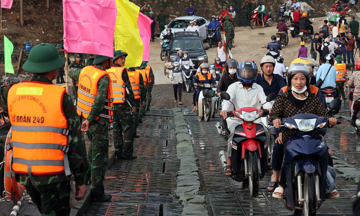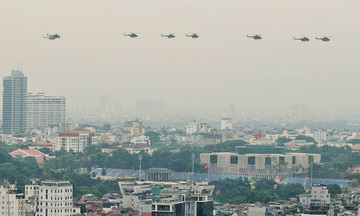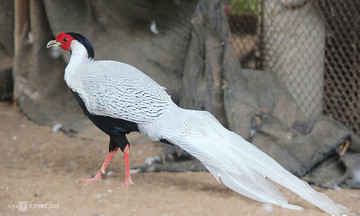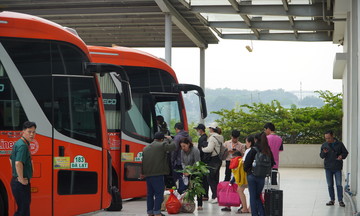According to the National Center for Hydro-Meteorological Forecasting, at 7 p.m. on 20/7, the typhoon's center was located over the northwestern area of the South China Sea, approximately 480 km east of Quang Ninh - Hai Phong. Maximum sustained winds reached 117 km/h, equivalent to a category 11 typhoon, with gusts reaching category 14. The typhoon is moving west at a speed of 20 km/h.
By 7 p.m. on 21/7, the typhoon is projected to be in the northern Gulf of Tonkin, with maximum sustained winds reaching category 11-12 and gusts up to category 15. It will be moving west-southwest at 20-25 km/h. By 7 p.m. on 22/7, it is expected to weaken to category 9-10, with gusts up to category 12, over the coastal areas of Hai Phong - Thanh Hoa, before making landfall and weakening further into a tropical depression.
Both the Japan Meteorological Agency and the Hong Kong Observatory predict that the typhoon will pass north of the Leizhou Peninsula and enter the Gulf of Tonkin without weakening, maintaining winds of around 108 km/h. The projected landfall area spans from Quang Ninh to Ninh Binh provinces.
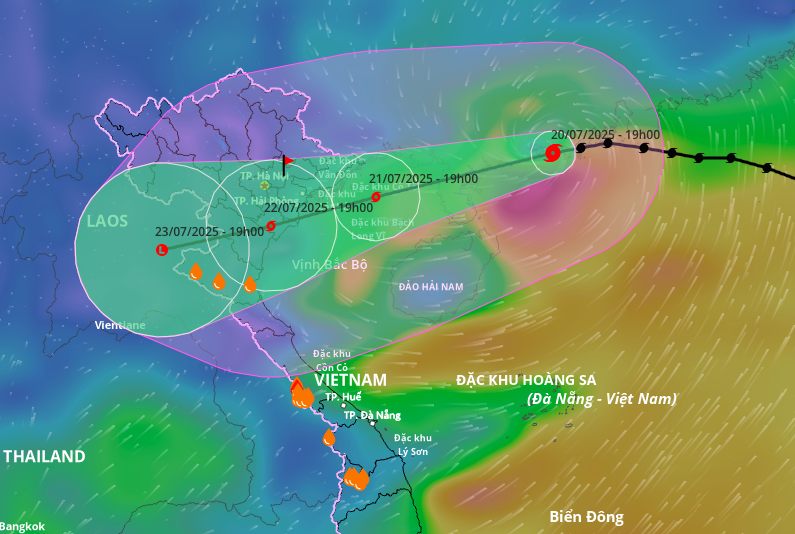 |
Projected path and affected areas of Typhoon Wipha. Photo: Disaster Monitoring System |
Projected path and affected areas of Typhoon Wipha. Photo: Disaster Monitoring System
Due to the typhoon's influence, the northwestern South China Sea is experiencing strong winds of category 8-9, with category 10-11 near the typhoon's center and gusts up to category 14; wave heights are 5-7 m. In the northern Gulf of Tonkin (including Bach Long Vi, Co To, Cat Hai, and Hon Dau), winds will gradually increase to category 6-7, then reach category 10-12, with gusts up to category 15; wave heights will be 3-5 m. The southern Gulf of Tonkin (including Hon Ngu island) will also experience strong winds of category 8-9, gusting to category 11, with waves reaching 2-4 m.
The National Center for Hydro-Meteorological Forecasting warns of extremely dangerous weather and sea conditions, unsafe for all vessels operating at sea, including tourist boats, passenger ships, and cargo vessels.
Coastal areas from Hai Phong to Quang Ninh may experience storm surges of 0.8-1.2 m. Water levels measured at Hon Dau (Hai Phong) are expected to reach 3.8-4.2 m; at Cua Ong (Quang Ninh) 4.8-5.2 m; and at Tra Co 3.8-4.4 m. The risk of flooding in coastal areas and river mouths on the afternoon of 22/7 is very high.
From the evening of 21/7, coastal areas from Quang Ninh to Nghe An will experience strong winds of category 7-9, with category 10-11 near the typhoon's center and gusts reaching category 14. Inland areas will experience winds of category 6-7, gusting to category 8-9. Category 10-11 winds can uproot trees, topple power poles, tear off roofs, and cause significant damage.
From 21/7 to 23/7, northern Vietnam, Thanh Hoa, and Nghe An will experience widespread rainfall of 200-350 mm, with some areas exceeding 600 mm; other areas of northern Vietnam and Ha Tinh will receive 100-200 mm of rain, with some areas exceeding 300 mm. There is a risk of extreme rainfall exceeding 150 mm within three hours, causing flash floods, landslides in mountainous areas, and flooding in low-lying areas.
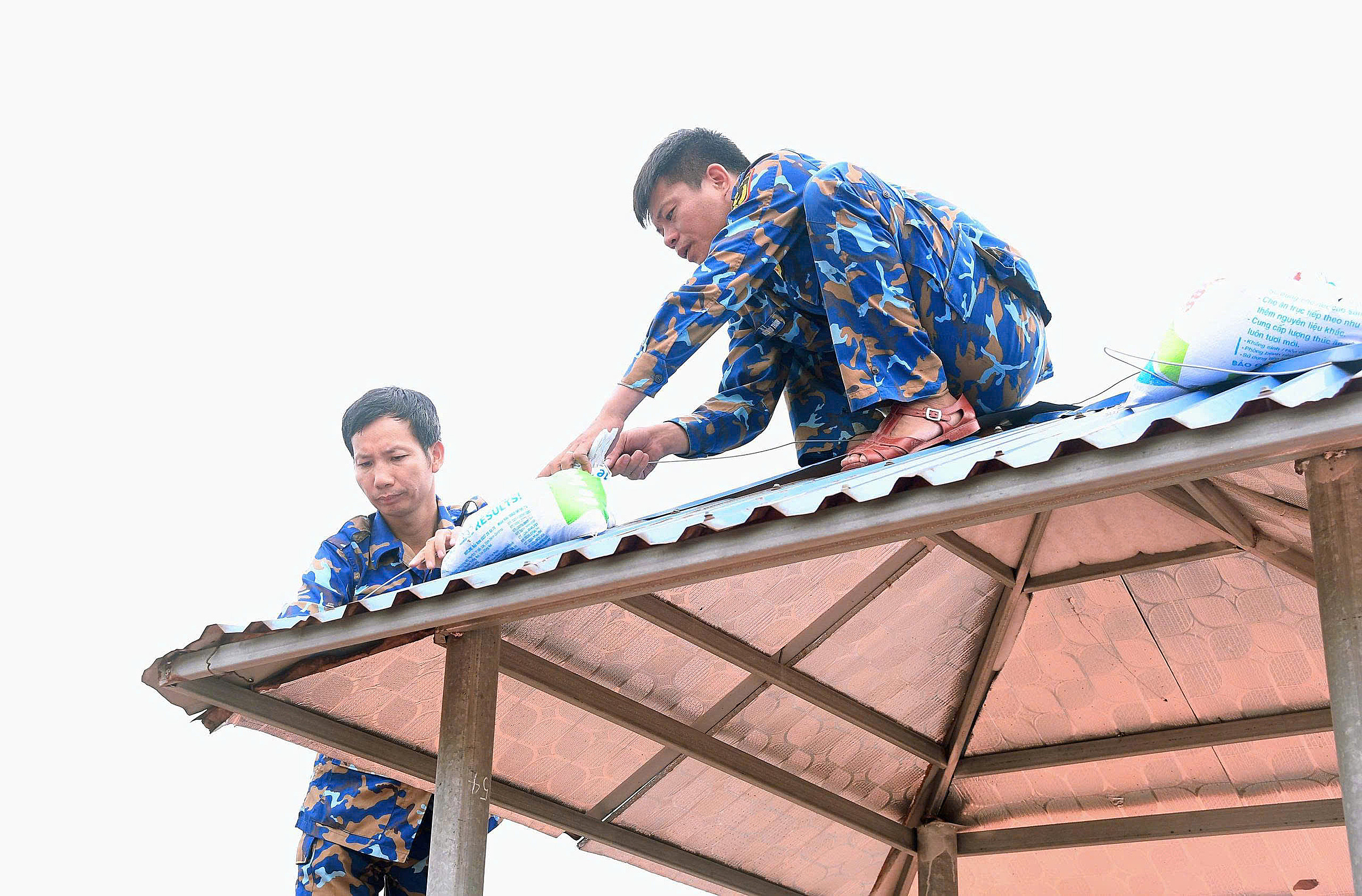 |
Naval Region 1 soldiers reinforce roofs. Photo: Navy |
Naval Region 1 soldiers reinforce roofs. Photo: Navy
In an online meeting with 1,700 communes and wards on the morning of 20/7, Deputy Prime Minister Tran Hong Ha requested specialized agencies to closely monitor the situation and accurately assess the scale and impact of the typhoon. He reminded localities to review the response capacity of their apparatus after mergers, ensuring unified direction and effective coordination among forces.
To prepare for Typhoon Wipha, Quang Ninh province has banned all tourist boats from operating in Ha Long Bay, and has also halted passenger ships to and between islands. Vessels are allowed to return to the mainland to disembark passengers but are not permitted to leave port afterward.
Ninh Binh province will implement a sea ban from 7 a.m. on 21/7 and evacuate residents from vulnerable dike areas before noon. Hung Yen province implemented a sea ban from 6 p.m. on 20/7. Hai Phong also began its sea ban from 5 p.m. on 20/7.
Gia Chinh






